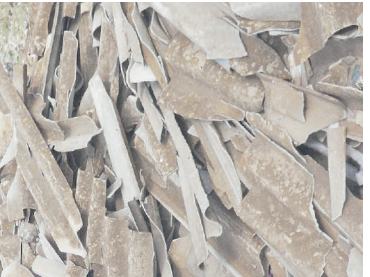
A looming clash between the national and county governments is unfolding over heaps of uncollected garbage scattered along roadsides, estates and unauthorised dumping sites across the country.
The Ministry of Environment has blamed counties for ignoring its advice and statutory notices on waste management, resulting in growing mountains of trash.
“Counties are adamant about undertaking Environmental Impact Assessments and Annual Environmental Audits, making it very hard for Nema to regulate them,” Environment CS Debora Barasa told the Senate plenary.
It has also emerged that several state agencies are yet to comply with a government directive to remove cancerous asbestos roofing from their buildings – more than a year after the directive was issued.
Barasa revealed that national and county agencies are still struggling to remove the hazardous roofs, despite a three-month ultimatum issued last year.
“We issued a gazette notice on the safe removal and disposal of asbestos in Kenya. But, cognizant of fiscal constraints, only a few have complied,” she said.
Barasa added that her ministry is now engaging the National Treasury to secure funds to fast-track the removal due to the serious public health risks posed by asbestos exposure.
In a direct indictment of the devolved units, the CS said counties have failed to license their waste transportation trucks with Nema.
This makes it impossible to track transporters – many of whom are accused of illegal dumping.
“Counties are slow to embrace waste segregation at source and have shown poor enforcement of related regulations,” she said.
Additionally, most counties have neglected their dumpsites and failed to maintain access roads to waste yards, making it difficult for garbage trucks to reach them. This has led to widespread illegal dumping.
Barasa also lamented the lack of proper waste management infrastructure in counties, including material recovery facilities, incinerators, landfills and recycling plants.
Across towns, cities and urban centres, garbage has become an eyesore – piling up on roadsides, in estates, markets and even near schools and hospitals, posing severe health risks.
According to available data, Kenya generates between 3,000 and 4,000 tonnes of waste daily, most of which originates from urban areas.
Baraza said the government is exploring ways of converting waste into usable products, noting that 60 per cent of Kenya’s waste is organic.
“The focus should mostly be on fertiliser production, which accounts for 60 per cent of the waste. Around 30 per cent comprises plastics and other recyclable materials and just five per cent is viable for energy conversion,” the CS said.
In August last year, then-Environment CS Aden Duale ordered all public institutions to remove asbestos roofing within three months, citing the associated health risks and warning of possible prosecutions for non-compliance.
He tasked the National Environment Management Authority with writing to affected institutions, urging safe disposal of the hazardous fibrous mineral.
Nema director general Mamo Boru later revealed that ministries – including Defence, Internal Security, Education and Health – were instructed to audit all facilities with asbestos roofing.
Asbestos is a group of six naturally occurring fibrous minerals widely used in construction during the 1960s and 1970s for their durability and fire-resistant properties.
However, its microscopic fibers pose serious health risks, including lung cancer, asbestosis and mesothelioma. Symptoms of exposure may take years to manifest.
Today, workers in the construction industry remain the most vulnerable, especially during renovations, repairs, or demolitions involving asbestos.




















